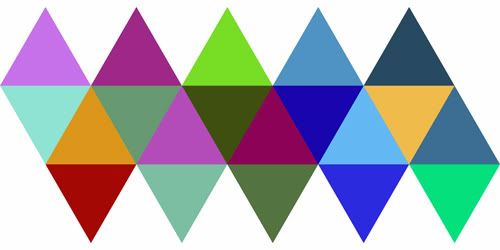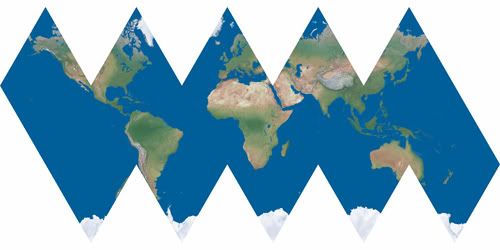You guys are all a bunch of nerds.
(As a non-programmer who knows very little about C++, C#, OGRE and the like, and whose modding skills barely stretch to writing scripted events for Europa Universalis, I just felt compelled to say this.

)
Anyway, since I'm the uber map nerd myself, and since Koshling wrote that he wanted to give globes a shot (which I think is awesome!), here is some more stuff that might be of interest for the rendering.
Koshling, if you don't find it of any use, just let me know. All the better if we don't have to concern ourselves with it, I suppose! But just in case there is some use to it, here we go:
I've already pointed out that the underlying shape for the global hex grid we are aiming to use is an isocahedron, a 20-sided die:

Now, it is of course possible to "fold out" the 20 triangular sides of the die into a plane. There are numerous possible configurations for this, but the one that I think is most potentially useful for our purposes is this one:

For further illustration, here is an Earth map, projected onto a twenty-sided die and then folded out:

Theoretically, it would be possible to treat the map as flat when the view is zoomed in far enough so that it is all completely within one of the triangles. Actually, along the middle row of triangles, you could move from the left edge of the map all the way to the right edge while treating it as flat. This might have some advantages for the display when zoomed very far in. I don't know, I'm just bringing up the possibility.
When moving from one triangle in the upper or lower rows to another triangle in the same row, it is not possible to treat the map as flat, because there are spaces between these triangles in the flat fold-out. So, for the transition from one triangle to another in these two rows, the camera would have to use the spherical rendering. Once only tiles from the next triangle are in view, it could theoretically go back to planar rendering again.
Like I said, I don't know if any of this is practical or useful, but I thought I might bring it up as a possibility just in case it is.

 .
. )
)


